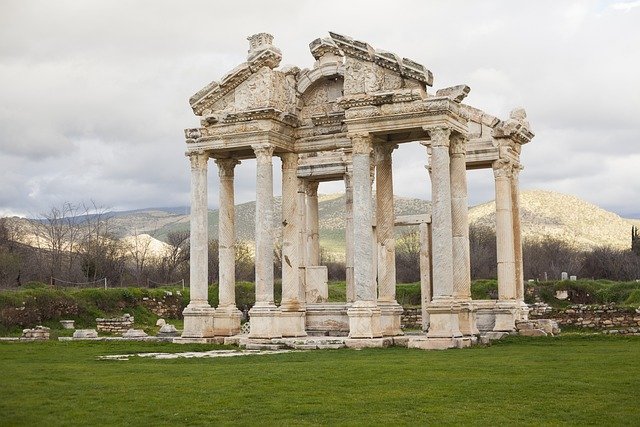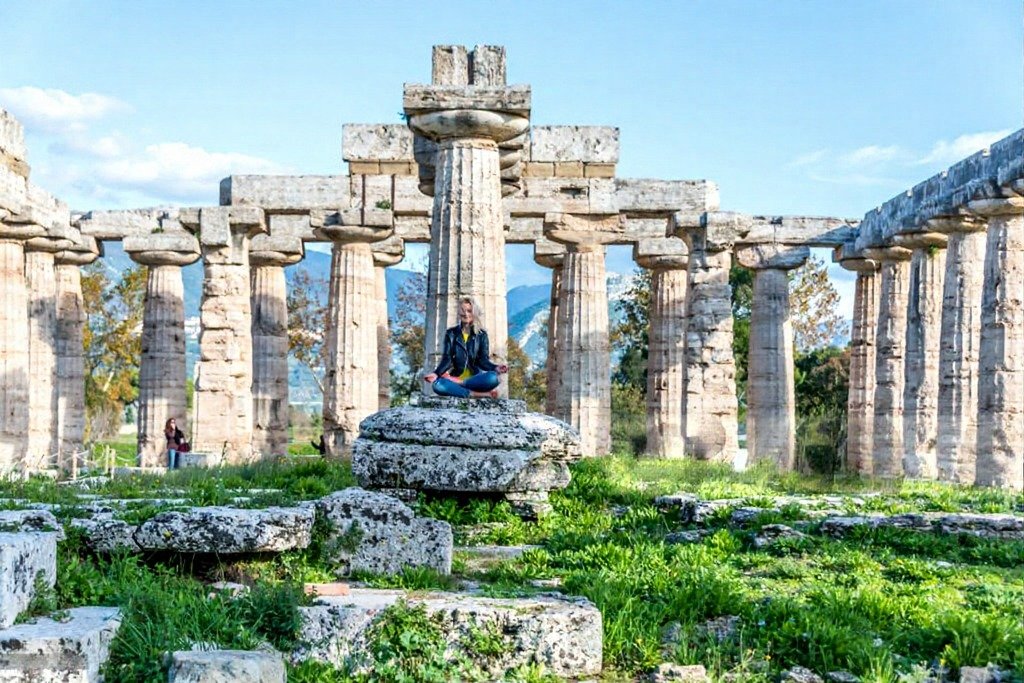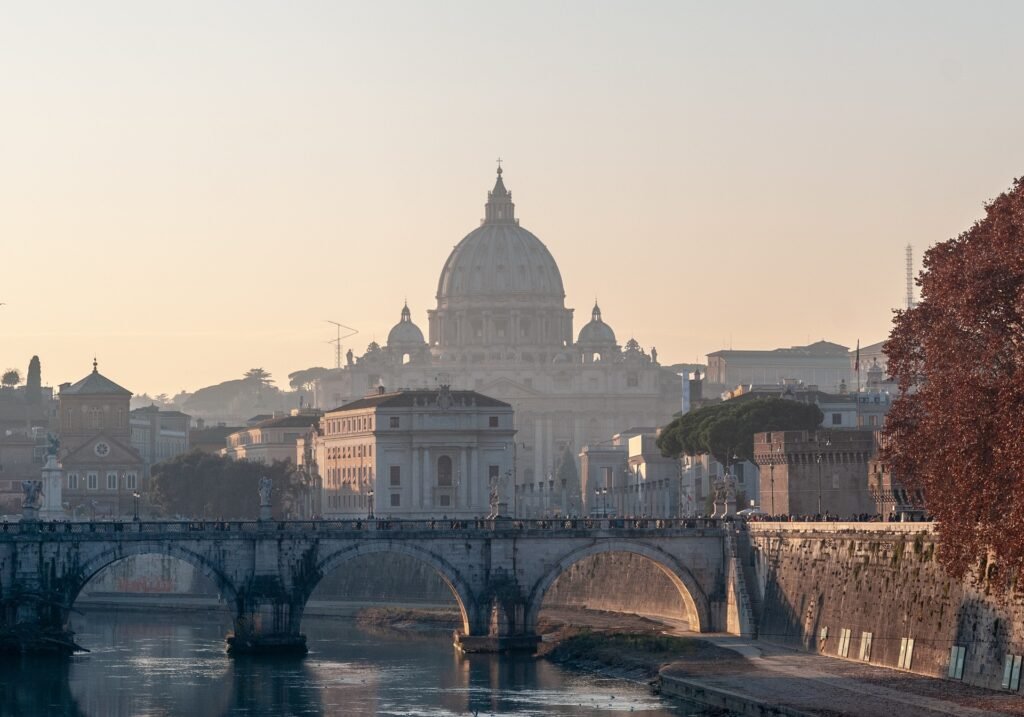When you’re in Rome, looking at all those water taps and fountains, you might wonder – Can you drink tap water in Rome?
Well, the short answer is a resounding yes! Rome’s tap water is not only safe but exceptional in quality, with 97% coming from natural springs.
Whether drinking from your hotel faucet or one of Rome’s countless public fountains, you can rest assured, knowing you’re consuming water that meets European safety standards.
Public Water Sources in Rome
| Type | What They Are | Approx. Number/Locations | What to Know |
| “Nasoni” Fountains | Small cast-iron fountains with continuous flow | Around 2,500 across Rome | Safe, always flowing, cold water; block the spout to drink cleanly |
| Case dell’Acqua (Water Houses) | Modern dispensers offering free flat & sparkling water | Found at metro stops, parks, markets | Filtered, chilled water; bring your own bottle |
| Hotel/Apartment Taps | Mains-supplied water in accommodations | All over Rome | Safe as per EU/ACEA standards; older pipes may affect taste |
Now, if you want to be let in on more to the story, like where to find safe water, and where it all comes from, I can be of help.
Let me share everything I’ve learned about drinking the tap water in Rome, Italy, as a savvy traveler.
The Big Question: Is Tap Water in Rome Safe to Drink?
As I’ve said already, drinking Rome’s water isn’t just safe—it’s among the best in Europe. And here’s why:
Remember those ancient Roman aqueducts you’ve seen in history books? Well, Rome’s modern water system is just as impressive.
Here’s the breakdown of where your tap water comes from:
- 97% springs (primarily from the pristine Apennine Mountains)
- 3% carefully managed wells
- Zero river water (unlike many other major cities)
Who Ensures the Quality of Tap Water in Rome?
When you can drink the tap water in Rome. Now, you might be thinking, “That’s all well and good, but who’s keeping an eye on things?”
The answer is ACEA, Rome’s water management company. And their quality control process is fascinating:
- Daily testing at hundreds of points throughout the city
- Over 250,000 analyses performed each year
- Continuous monitoring for 64 different quality parameters
- Advanced Waidy Water Management System for sustainable water management.
And here’s the thing – what makes Rome’s water special isn’t just its safety, but its mineral content. ACEA says, the water contains:
- Optimal levels of calcium and magnesium
- Low sodium content
- Perfect pH balance for drinking
- Natural minerals that actually contribute to your daily nutritional needs
Rome’s Famous Fountains: Your Free Water Stations
Now, here’s where it gets interesting… See those charming little fountains you see on almost every Roman street corner?
They’re called “nasoni” (literally “big noses,” and you’ll see why when you look at them), and they’re not just decorative – they’re your ticket to endless free, fresh drinking water.
But wait! Before you run off to fill your bottle at the Trevi Fountain, there’s something important you need to know…
Remember the Fountain Rules:
- Nasoni fountains = Perfect for drinking
- Monumental fountains (like Trevi) = Absolutely not for drinking (they use recirculated water)
How to Find a Nasoni in Rome:
- Download apps like “I Nasoni di Roma” or “WaterFinder Rome“
- Use ACEA’s Nasoni map.
- Look for maps at tourist information points
- Generally located near major attractions and gathering places
- Most numerous in the historic center
Here’s a pro tip:
To drink from a nasoni like a local, plug the downward-facing spout with your finger. This forces the water up through a smaller hole on top, creating a perfect drinking fountain. Pretty clever, right?
When NOT to Drink the Water in Rome
- Decorative/monumental fountains (e.g. Trevi Fountain) — recirculated, not for drinking.
- Any fountain with a sign saying “Acqua Non Potabile”.
- Older private buildings with outdated plumbing — let the tap run a few seconds before filling your bottle.
- Restaurants may not serve tap water unless you specifically request it.
Can You Ask for Tap Water in Restaurants and Bars?
Now, when you’re sitting at a charming trattoria in Trastevere or any other restaurants in Rome, the waiter will automatically bring a bottle of mineral water to your table.
But can you (or should you) insist on tap water instead?
Well, here’s the unexpected answer: No.
Despite having the best tap water in Europe, there’s a strong cultural preference for bottled water. It’s one of those quirky Italian traditions that doesn’t quite align with the facts.
So, if you do ask for tap water (or “acqua del rubinetto”), don’t be surprised if you get a slightly puzzled look.
Still, while restaurants may initially resist, they’ll usually provide it if you insist. Bars and cafes tend to be more relaxed about serving tap water – just ask for a glass of “acqua dal rubinetto.”
Related important articles
- Best gelato in Venice
- Best hotels in Cinque Terre
- Best museums in Florence
- Best coffee shops in Venice
Where Can You Find and Refill Drinking Water in Rome?
So, how do you actually make the most of Rome’s excellent tap water system?
Finding Your Water Sources
- Nasoni Fountains: These are your best friends. They’re everywhere in the historic center, and the water is always fresh and cold.
- Can you drink tap water in Rome hotels? Yes, the tap water is perfectly safe.
- Rental Apartments: Same deal – drink up!
- Bars and Cafes: Well, you’ll surely get the frowns, but don’t hesitate to ask; they do provide tap water upon request.
Smart Traveler Tips
- Bring a reusable water bottle (or buy one there)
- Download one of the many apps that show nasoni locations (like ones I mentioned already, “I Nasoni di Roma” or “WaterFinder Rome“)
- If you’re sensitive to different mineral contents in water, give yourself a few days to adjust
The Great Debate: Tap vs. Bottled Water in Rome
Is tap water in rome, Italy, safe to drink
Here’s a mind-boggling fact: Italy has one of the highest rates of bottled water consumption in Europe, despite having excellent tap water.
Why? It’s mostly about marketing and cultural preferences, not quality.
Let’s break down some myths:
- Myth: Bottled water is safer than tap water
- Reality: Rome’s tap water is subject to stricter quality controls than bottled water
Think about the environmental impact: Every plastic bottle you don’t buy is one less piece of plastic potentially ending up in the Mediterranean. Plus, your wallet will thank you – those €2 bottles add up fast!
Which bottled water to choose? (If You Must)
Okay, let’s say you’re in a situation where tap water isn’t available, or you just prefer the bottled variety. What then? Well, when in Rome… choose as the Romans do! Here’s what you need to know:
Different types of bottled water in Italy:
- Naturale: Still water
- Frizzante: Lightly sparkling
- Gassata: Strongly sparkling
Popular brands include San Pellegrino, Acqua Panna, Ferrarelle, and Levissima, each with its own mineral content and taste profile.
Essential Italian Water Vocabulary
Now, let me share this handy glossary with you, which should help you navigate the world of Roman water:
- Acqua del rubinetto = Tap water
- Acqua naturale = Still water
- Acqua frizzante = Sparkling water
- Nasone = The nose-shaped public fountains
- Fontanella = Another term for a drinking fountain
- Un bicchiere d’acqua = A glass of water
- Una bottiglia d’acqua = A bottle of water
- Posso avere dell’acqua del rubinetto, per favore? = Can I have tap water, please?
- Con ghiaccio = With ice
- Acqua non potabile = Non-drinkable water
Tools to Find Drinking Water in Rome
- ACEA Map – official map of public water fountains.
- WaterFinder Rome App – shows nearest nasoni and water houses.
- Google Maps – type “nasone fountain Rome” to see locations.
The Bottom Line
So, there you have it – the ins and outs of drinking tap water in Rome.
Rome’s relationship with water goes back thousands of years, and today’s Romans can be proud that their tap water continues this legacy of excellence.
Whether you’re sipping from a centuries-old fountain or your hotel tap, you’re drinking some of the best water Europe has to offer.
So next time you’re in Rome, do as the informed travelers do: bring a reusable bottle, find your nearest nasone, and drink up with confidence. After all, when in Rome… you drink as the Romans do.
Frequently asked questions
Is tap water safe to drink in Italy for tourists?
Yes, tap water in Italy is safe to drink for tourists. Whether you’re visiting big cities like Rome, Florence, or Venice, or exploring the countryside, the water is treated and monitored to meet EU safety standards. Most locals drink it daily, and you can too—just look out for signs saying “acqua non potabile” (non-drinkable) near some public fountains.
Can you drink Italian tap water?
Yes, you can drink Italian tap water almost everywhere in the country. Italy’s public water supply is high quality, and it’s regularly tested for safety. In fact, many Italians use tap water for drinking, cooking, and making coffee. So, feel free to refill your bottle straight from the faucet—it’s safe, refreshing, and eco-friendly.
Is water from the sink safe to drink in Rome?
Yes, sink water in Rome is safe to drink. Whether you’re staying at a hotel, an Airbnb, or dining in a local café, the water from the tap is clean and meets strict health regulations. Rome’s tap water mostly comes from natural springs and contains healthy minerals—so you can drink it straight from the faucet without any concerns.




